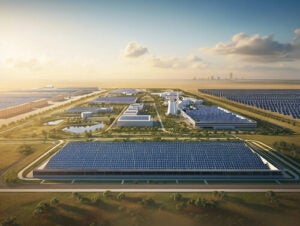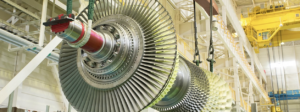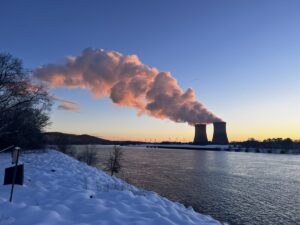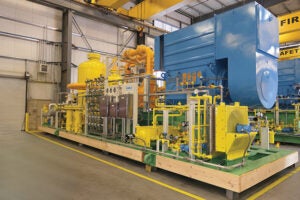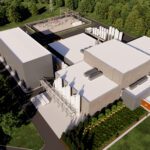The goal of economic power generation from fusion has been elusive, but that hasn’t deterred researchers from exploring ways to develop the technology in a way that would support commercial electricity production.
POWER magazine has covered the evolution of fusion research and development for many years, and nuclear experts now think we could be just years—not decades—away from commercial applications.
Michl Binderbauer, CEO of TAE Technologies, is among those working to commercialize fusion. His California-based company, founded in 1998, has explored many concepts related to fusion; some of the company’s technical writings are available here.
Binderbauer recently answered questions from POWER about his company’s work and the challenges of developing a power management strategy to make fusion energy a commercial reality.
POWER: Increased investment into the research and development of fusion energy is driving a more realistic view of the technology as a viable option to provide abundant, reliable electricity. But there remain obstacles, including the need to upgrade the existing power grid. What elements need to align to improve power transmission infrastructure in a way that would accommodate fusion energy?
Binderbauer: Fusion doesn’t need anything different than coal, gas, or traditional nuclear fission—a switchyard, distribution systems, etc. Talking about the grid at large, however, is a different story.
The grid of today is not fit for getting us to a future of electrified transportation, for example. From what we have seen so far, it looks like an all-electric transportation sector would lead to 2x–3x more energy consumption at the end points. Although renewable energy is widely available during the day, vehicles would likely be charged at night, when there is already the greatest load.
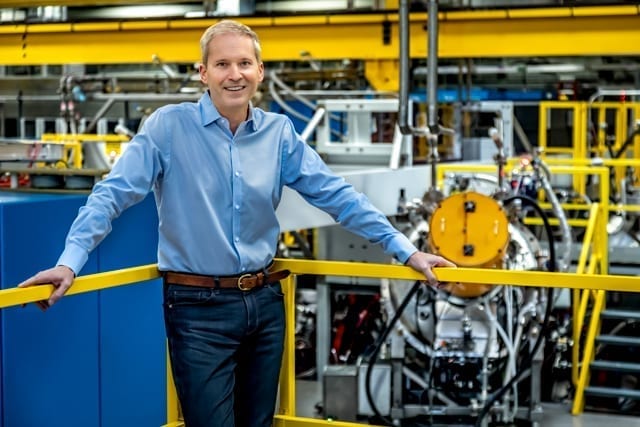
Even if we can find ways to accommodate and offset this with updated transformers, an intermediate switchyard, buffering, and fast charging capabilities, there will need to be end-to-end upgrades to address the lopsided demand-versus-supply problem.
TAE’s Power Management technology, which serendipitously grew out of the scientific advances the company has made in pursuing our unique approach to fusion, is being commercialized right now to bring transformative innovations to the entire food chain of the grid that, when deployed, will enhance grid robustness, efficiency, and flexibility. Our impact will scale from kilowatts near the individual residential user all the way to the power plant and gigawatts flowing through the distribution network.
From a first-product perspective, we will introduce our solutions on the electric mobility platform, as well as on the stationary grid supply side now, and expect to follow with dispatchable power through commercial fusion later this decade.
POWER: Is fusion energy research and development best driven by private investment, more government support, or a mixture of both?
Binderbauer: Government investments usually underwrite higher-risk projects, while private-sector investment historically brings capital efficiency that drives shorter, more cost-effective cycles to success. If we combine the best of both of those worlds, we believe we can more quickly drive toward demonstration of net energy. Moving from there to a full power plant, this duality is highly desirable. It would benefit both the public and private sector to work together on prototypes and early production units. For instance, early adopter risk can be offset with loan guarantees, like we saw with the Navy from the very early development of fission, where Idaho National Laboratory built 50 smaller reactors to iron out technology kinks, and then the likes of Westinghouse and GE took on full commercialization in the private sector.
Want to hear from another nuclear energy developer? Read this POWER Interview with Bob Mumgaard, CEO of Commonwealth Fusion Systems, and listen to Bob talk about his company’s technology on The POWER Podcast.
POWER: Renewable energy—there remains debate in many circles about whether nuclear qualifies for that term—is certainly the future. Nuclear proponents say their industry must be part of the discussion of reducing emissions and solving climate change, along with solar and wind power. Though nuclear advocates tout its zero emissions, advocates for renewable power rarely include nuclear in the discussion. Must that change in order to drive more support for fusion energy?
Binderbauer: We unequivocally need a form of reliable dispatchable power—power that can be turned on any time you need it. Both fission and fusion are sources of zero-emissions nuclear energy. Compared to fission, fusion energy has the distinct advantages of producing no long-lived nuclear waste and posing no risk of meltdown.
Renewables such as solar and wind will certainly occupy a spot in the supply chain. However benevolent, though, they are variable sources of energy. Even buffering with batteries that don’t exist yet, we know we can’t absorb all of the seasonal cycling of wind and solar. Meeting large-scale energy needs with renewables would require more than installing rooftop panels on our homes. We would need vast solar farms, windmills, and transmission lines, all of which will have an impact on the environment and our quality of life. If you want to see a 100% carbon-free generation capacity today, it would have to include renewables and fission.
We like to remind people that ‘nuclear’ is not synonymous with ‘fission.’ Nuclear is a categorization, similar to animal classification. For example, we understand that not all reptiles are snakes; not all snakes are poisonous; and so on. Nuclear is the general umbrella term under which our scientific processes both fall. We hope that in around 10 years, TAE’s clean hydrogen-boron commercial fusion will be able to support our energy needs with no emissions, no regulatory burden, and, because of our compact size and safe environmental profile, operating in dense population centers where the energy demand is greatest.
POWER: What are the next-generation power management technologies that can support fusion energy?
Binderbauer: As mentioned above, deploying fusion power plants doesn’t require any grid infrastructure beyond what’s available today. However, the Power Management infrastructure TAE is generating as a byproduct of our fusion development actually helps accelerate our final development steps to get to commercial fusion. As an example, our next generation device Copernicus will be able to operate with a meager grid feed because we are able to intelligently and efficiently store, buffer, and dynamically release the large amount of power we need on the machine while not disturbing the grid. As also mentioned, by virtue of our Power Management technology, there is the immediate opportunity to catalyze electric transportation, as well as optimize, modernize, and make the grid more efficient—with or without fusion.
—Darrell Proctor is associate editor for POWER (@POWERmagazine).


